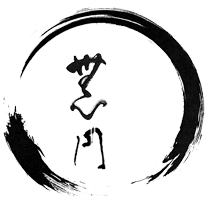02 Ott Philosophy and Physics Between Europe and Japan (1922-1953) – (Napoli, 2 – 4- October 2023)

Philosophy and Physics between Europe and Japan
(1922-1953)
October 2 – 4, 2023
____________________________________________________________
Hybrid Conference
Online / Aula Ex-Cataloghi Lignei (Via Porta di Massa 1)
The main goal of this conference is to reconstruct how Japanese intellectuals and scientists react to the foundational questions emerging from relativity theory and quantum mechanics. Through an interdisciplinary investigation leading to the identification of original contributions and fruitful contaminations, an attempt will be made to highlight, on the one hand, the scientific sensitivity of some philosophers of the socalled Kyoto School, on the other hand, the role played by philosophical reflection in the conceptual development of some Japanese physicists. What we hope for is to acquire new reading-keys to critically reexamine our understanding of philosophy and physics from a cross-cultural perspective.
The time frame is bounded by two particularly significant dates: in 1922, Albert Einstein is invited to Japan, in 1953, the Japanese Association for the Philosophy of Science is founded, and the Research Institute for Fundamental Physics is opened at Kyoto University. Einstein’s visit is initiated by the philosopher Nishida Kitarō (founder of the Kyoto School) who, elaborating on the physical concept of field and mathematical topology, in 1926 comes to define the idea of place [basho], the core of his logical-philosophical system. The birth of the Association for the Philosophy of Science is initiated by the meeting between the philosopher Shimomura Toratarō, a student of Nishida Kitarō and Tanabe Hajime, and a group of physicists from the University of Tokyo (M. Sugawara, K. Nakamura, S. Tomonaga, Y. Fujioka); the creation of the Institute for Research in Physics is due to Hideki Yukawa.
In the years 1922-24, the philosopher Tanabe is in Germany for a period of study under the supervision of Martin Heidegger. In 1928, the physicist Yoshio Nishina, trained in Europe mainly under Niels Bohr at the University of Copenhagen, returns to Japan and starts a research center in quantum physics at RIKEN, the Institute for Physical and Chemical Research, in Tokyo. In the fall of 1929, Werner Heisenberg and Paul Dirac visit Kyoto University together and give a series of lectures on the uncertainty principle and the relativistic theory of electron, respectively; the lectures have a profound impact on the young physicists Hideki Yukawa and Shin’ichirō Tomonaga. In 1935, Yukawa advances the hypothesis of the existence of a new particle, the meson, which will later be discovered in cosmic rays (in 1947). In 1937, Niels Bohr visits Japan and the idea of “complementarity” further penetrates the epistemological debate. Finally, in 1949, the first Japanese Nobel Prize is awarded to the physicist Hideki Yukawa.
Looking ahead, 1953 is also a significant year because John A. Wheeler pays his first visit to Japan and initiates a dialogue with some Japanese physicists, in particular Yukawa, based on their respective personal readings of Einstein’s ideas.
*********************

